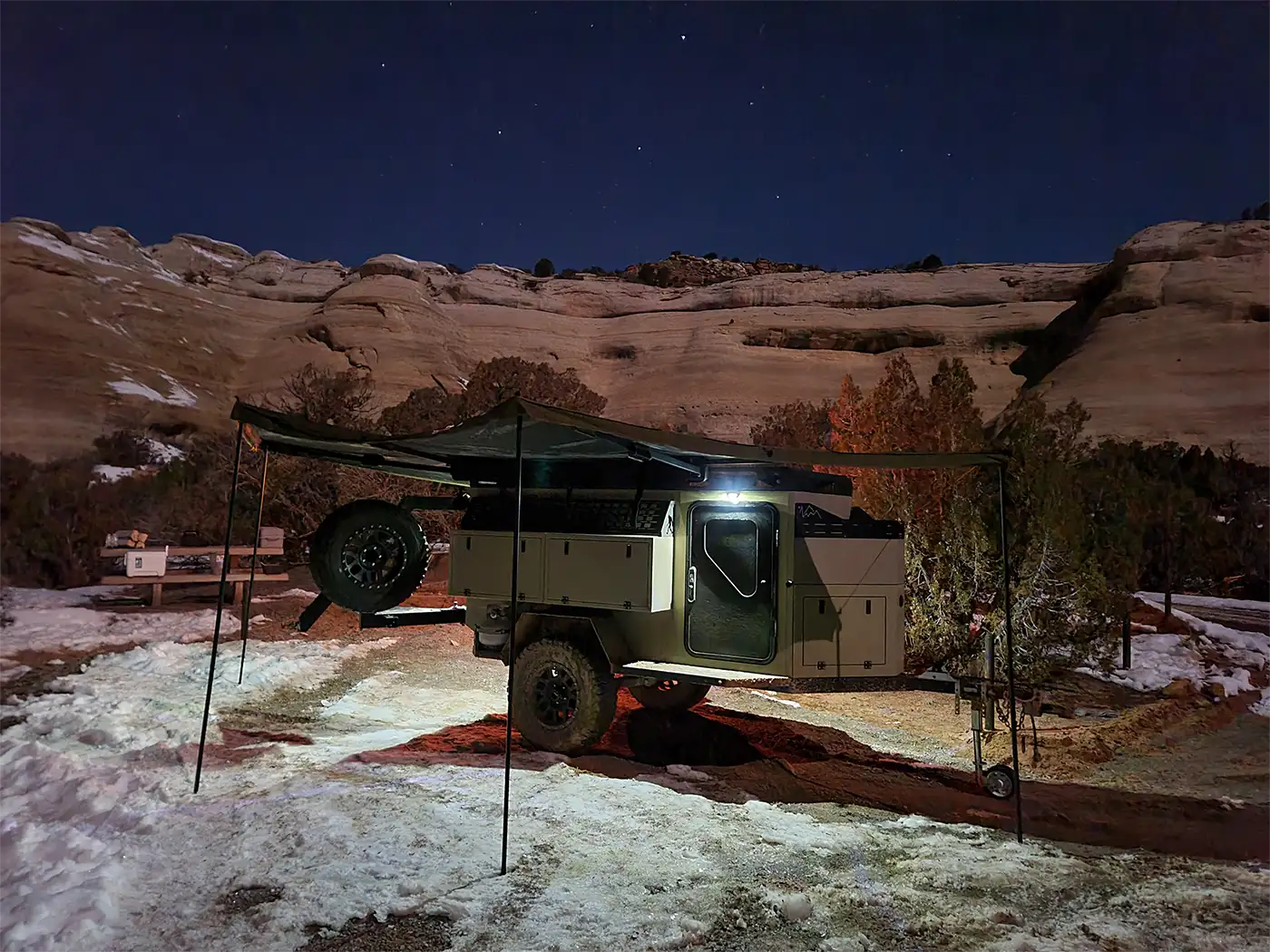
Be Prepared
Most people associate camping in the summertime when the weather is warm and the days are long, but with new products on the market, like the Sasquatch Highland 60 which provides insulation and heating system, explorers can take advantage of camping farther into the off-season and even into winter months. Taking a trip during the off season can lend to some remarkable views of snowy vistas and smaller crowds but it also means needing to be prepared for winter or cold weather conditions like snow and ice. We're breaking down the do's and don'ts of winter driving and camping so you feel in control and have a fun experience.

Before heading out, no matter the season, it's important to do your homework on the upcoming weather patterns and conditions. There are several highly recommended weather radar websites and apps that are both free to download and use:
There are a handful more sources of weather information available, however some may require a fee to purchase or subscribe. Spend time researching the different sites and apps to find the one best suited for your area and needs.

Like always, take the time to check your vehicle and anything in tow. Most manufacturers will have pre- and post-vehicle inspection lists to follow. At Sasquatch, we've put together easy to follow checklist for pre-inspection and post-inspection for our offroad campers. But in the winter months, you also need to taken into consideration weatherization and learning to winterize camper plumbing. During the winter months, you run the risk of having your water tanks freeze, which can be an expensive mistake and a huge headache to deal with. In general, protecting your plumbing involves draining your tanks and adding RV antifreeze to the system. Cold temperatures can also negatively affect batteries as well and you'll want to ensure your storing them in a dry, warm location and recommend charging the battery to 100% before storage. We've created the Sasquatch Winter Checklist for winterizing our campers and managing the equipment during freezing temperatures.
There's nothing worse than spending a sleepless, freezing night camping because you didn't bring the correct gear with you- if this has happened to you, you absolutely know what we mean. There are many products on today's market that are rated to low/freezing temperatures that are worth the investment if you decide to camp in the winter months. Be sure to check the rating of your gear, including clothing, sleeping bags, and blankets. If you have a vehicle or camper that you can sleep inside, make sure you're familiar with its insulation rating and heating mechanisms. If it requires fuel like propane, gas, or electricity to heat, make sure you have enough to supply at least 1.5x your expected duration. Finally, each product's manufacturers will have special requirements or steps to run these systems safety and most efficiently, and it's important to review all instructions and precautions before use. Bringing along extra warm clothes, candles, matches, and snacks in the winter months is also a good way to prevent further complications in case any issues arise.

Many people are excited about reaching their campsite and want to get there quickly to maximize time spent there. In winter conditions, this can be dangerous though. Even skilled winter drivers in 4-wheel drive vehicles shouldn't assume their experience or the vehicles' ability outweighs the hazards on the road. Adding additional accessories, like trailers, campers, or heavy gear, can increase the risk when driving as well. According to the 4-Wheel Drive guide website, "4-wheel drive does not assist with braking or stopping on ice roads. Decrease your speed and increase your following distance." To stay safe in winter conditions, slow down at least 10 miles under the speed limit and do not follow other vehicles too closely.
If you suddenly feel unsafe or that conditions are rapidly deteriorating beyond what is expected, it's important to reassess the situation and find safety or help. If you're driving and the inevitable happens and your vehicle slides off the road and gets stuck, try to maintain calmness and call emergency services. According to the National Weather Service (NWS), getting out of a vehicle in this situation is a bad idea as once outside, the dangers of becoming disoriented, getting lost, or suffering from hypothermia become very real. The NWS recommends to "run the motor about 10 minutes each hour for heat. While running the motor, open the window a little for fresh air to avoid carbon monoxide poison. Clear snow from the exhaust pipe to avoid gas poisoning." The NWS also stresses the important of vehicle visibility to other motorist and rescue crews, "Turn on the dome light at night when running the engine. Tie a bright colored cloth, preferably red, to your antenna or door. After snow stops falling, raise the hood to indicate you need help."
We hope you learn something new and use it on your next winter adventure! Have questions? Reach our team at (970)729-8506 or by emailing us via our contact form.
Legendarily,
The Sasquatch Team